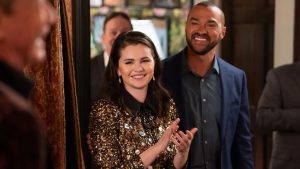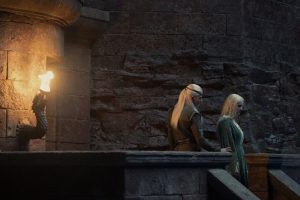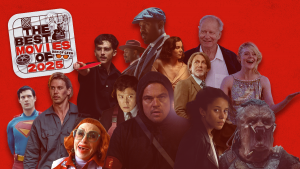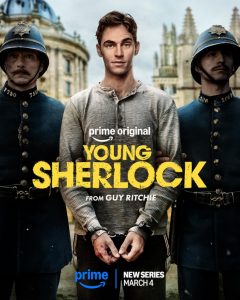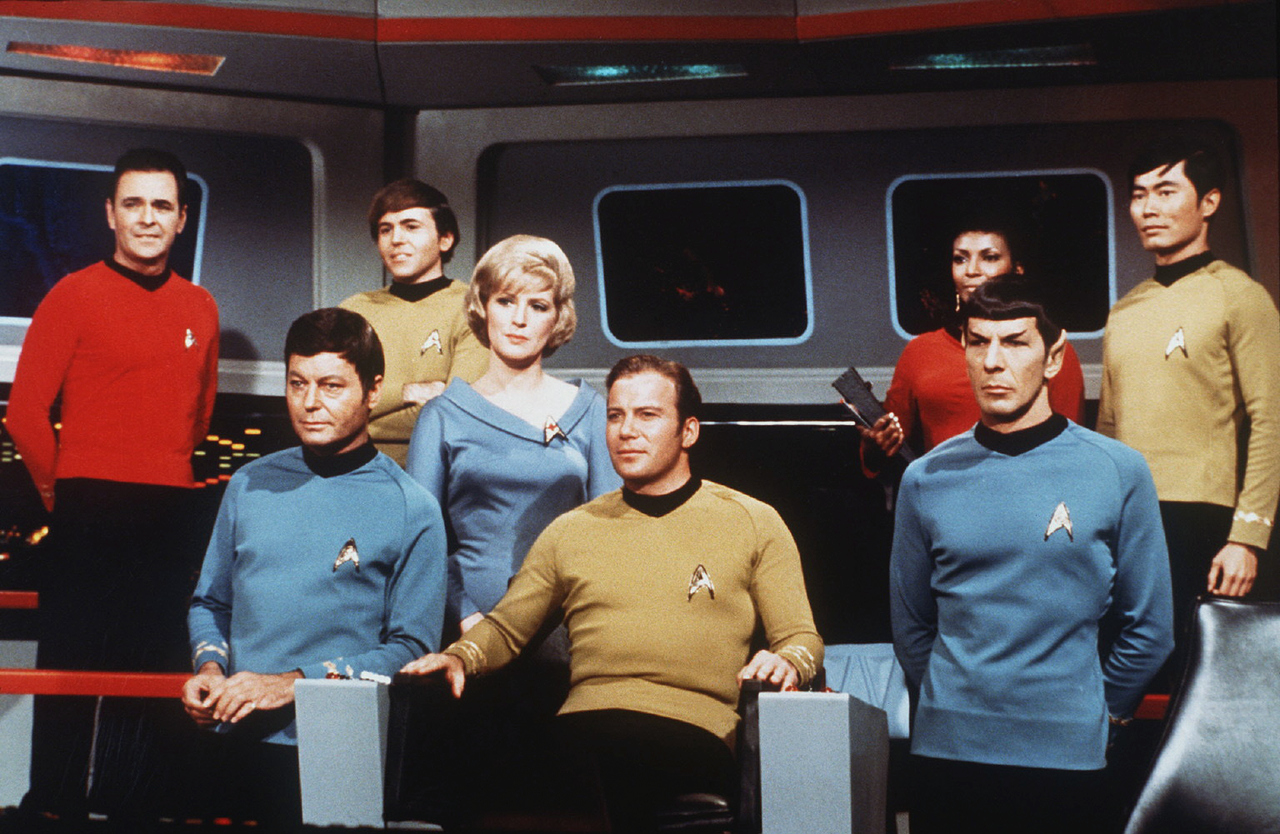
Since its first entry “The Man Trap” aired on Sept. 8 1966, Star Trek has released almost 900 episodes and 13 feature films. And yet, none of those TV episodes or movie releases have delved into that most popular of genres, the Christmas story.
Anyone who knows about the production of The Original Series can understand the reason for that omission. Star Trek creator Gene Roddenberry placed religion alongside racism and capitalism as divisive tendencies from which humanity evolves. So of course a holiday based on Christianity and/or shopping would fade away as humans looked toward the stars.
But as is often the case, the actual execution of Star Trek differs wildly from Roddenberry’s intentions. Even though the franchise never openly embraces Christmas, some aspects of the holiday do catch up with it, no matter how far it boldly goes.
Does Starfleet Know It’s Christmas Time at All?
The first mention of Christmas in the Star Trek universe appears in the season one Original Series episode “Dagger of the Mind,” in which Kirk mentions a Christmas Party on the Enterprise. Most viewers can explain away that contradiction in the same way they don’t get hung up on early fudging of Starfleet history or Data using contractions.
However, a scene with Data later on might help provide some headcanon for those who need it. In the Next Generation season four episode “Devil’s Due,” Data mentions his preparations to play Ebenezer Scrooge in a production of A Christmas Carol. Religious implications aside, A Christmas Carol falls in line with Data’s love of classic English literature, which also drove him to Sherlock Holmes, Robin Hood, and other works of the era.
In fact, as the title “Dagger of the Mind” reminds us, English literature remains incredibly influential in the 23rd and 24th centuries. So the Enterprise crew may have thrown a Christmas party as an extension of their interest in the culture, not as an expression of religious observance and certainly not as a capitalist exercise. That interest might also explain the various passing references to Christmas from various other characters, such as La’an Noonian-Sihgn comparing shore leave to Christmas in Strange New Worlds or Tom Paris mentioning Scrooge’s ghosts in the Voyager premiere.
Of course, none of that explains the most overt use of Christmas in Star Trek history: Picard’s Dickensian fantasy in Star Trek: Generations. The fantasy occurs when Picard enters the Nexus, a transdimensional space that, according to Guinan, is “like being inside joy.” It urges inhabitants to stay inside of it by giving them their greatest desires. Apparently, Picard — a man who dislikes children, spends his downtime reading hardboiled detective fiction, and has a passion for exploration and archeology — secretly desires Christmas with his large family.
Look, there’s no way to justify the scene, just one of many out-of-character Picard moments in the Next Generation films. The best we can do is concoct some headcanon about the Nexus giving people false desires, which might also explain the domestication of one James T. Kirk.
This one lapse notwithstanding, it’s clear that while people know about Christmas in Star Trek’s future, it hardly carries the same significance as it does to many people today.
Star (Trek) of Wonder, Star (Trek) of Light
All of that said, Trek’s aversion to religion has been overstated. There are Trek stories that have included more sympathetic views of religion. That’s most pronounced in Deep Space Nine, in which the Bajoran religion certainly can be a means of domination (don’t forget about Kai Winn, my child), but it also drives Kira and others to resist their oppressors. Even the Vulcans, who have largely moved past religious beliefs, respect the spiritual value of symbols such as temples and vestments.
One of the best demonstrations of the franchise’s complex feelings about religion involves Neelix, of all people. The Voyager season four episode “Mortal Coil” (more Shakespeare!) revolves around the Talaxian holiday Prixin, during which family gathered to share food and strengthen their bonds. Okay, that’s not the most obvious Christmas parallel, but the episode did first air on Dec. 17, 1997 and explicitly deals with religious beliefs. Written by Bryan Fuller and directed Allan Kroeker, “Mortal Coil” begins with Neelix’s death and eventual resurrection, 19 hours later. The experience shocks Neelix and forces him to question his religion. But through the help of Chakotay and (sigh…) a vision quest, Neelix learns to balance his beliefs with his new knowledge.
That balance actually shows up way back in TOS, in the season two episode “Bread and Circuses,” directed by Ralph Senensky and written by Roddenberry and Gene L. Coon. Most of the episode plays like the standard Earth-like planet story, in which the Enterprise finds a planet on which the Roman Empire continued through the 20th century. Kirk, Spock, and McCoy fall in with a group of rebels, who reject the warlike nature of the Empire and seek out peace. Throughout the episode, the away team take the rebels’ descriptions of themselves to mean that they worship the sun. But back on the Enterprise, Uhura corrects their mistake. The rebels don’t worship the sun — they worship “the Son,” that is the Son of God, Jesus.
Instead of ending on that reveal, the episode lingers for a few seconds to let Kirk marvel at the idea that Christ has developed alongside Caesar, even on this new planet, briefly entertaining the desire to watch how this Son and his followers will respond to the empire. That interest suggests that, even if Kirk and his fellow explorers don’t share Christian beliefs, they at least respect Christ’s peaceful teachings.
Yule Life and Yule Civilizations
There are more than a few parallels between the meaning of Christmas and Star Trek ideals. Within the world of the franchise, humanity followed the destruction of World War III by pursuing peace on Earth. As they travel through the cosmos, they seek goodwill toward men, women, and all other lifeforms they encounter. Whether it is Kirk refusing to fight the Gorn captain, Picard standing in the way of a drumhead trial, or Michael Burnham urging Starfleet against attacking Species Ten-C, Starfleet time and again puts respect and understanding over selfishness and war.
Even if Picard never commanded “Make it snow” and Neelix never whipped up some nightmare akin to figgy pudding, Star Trek continues to follow the model of Data’s character Ebenezer Scrooge at the end of A Christmas Carol, honoring Christmas in its heart, and following its ideals all the stardates.
The post Star Trek May Not Have Christmas, But It Has More Holiday Spirit Than You Think appeared first on Den of Geek.
